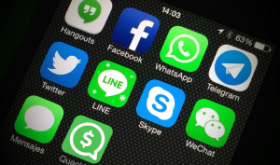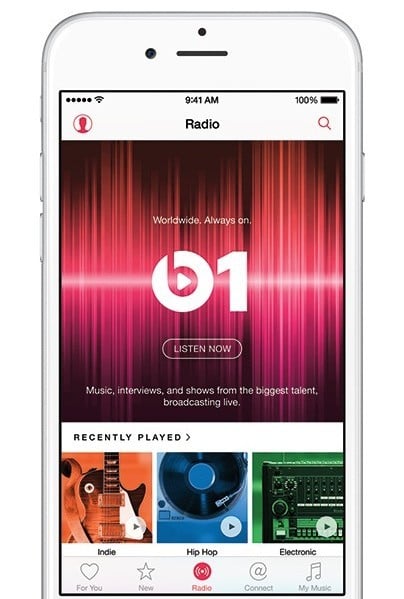Three out of four people used an OTT messaging app in 2015 – up 31 per cent on last year – the enterprise app market will gross $63bn by 2020 and smartphones are killing e-reader and MP3 player sales.
Explore these and many more mobile reports and data updates in this week’s MEF market stats round-up…

1.4bn people will use mobile messaging apps this year
Three out of four smartphone users will use an over-the-top (OTT) mobile messaging app at least once a month in 2015. That’s 1.4bn people – and the number is 31 per cent up on last year. A new report by eMarketer outlines the extraordinary impact of products such as WhatsApp, Facebook Messenger, WeChat, Line and Snapchat. It says their popularity will continue, and that by 2018 the number of chat app users worldwide will reach 2 billion and represent 80 per cent of smartphone users. eMarketer singles out WhatsApp and Facebook Messenger as the two “global powerhouse” apps. They each have reach in more than 20 countries. That said, it also states that Asia-Pacific is home to 58 per cent of of the world’s messaging app population users.
Of course, monetisation remains a big challenges for these OTT players. Models include paid digital content (such as games, videos and emojis), advertising (official accounts, in-feed ads), mcommerce (in-app purchases), online-to-offline commerce (ordering food, hailing a cab) and finance (peer-to-peer payments and subscriptions).
“Some of the key drivers of mobile messaging’s growth identified include consumers’ growing interest in intimate forums for social sharing, the multiple modes of communication offered by messaging apps and the growing number of features offered, including peer-to-peer payments and mcommerce,” said Cathy Boyle, senior analyst, mobile.
Read more…
Enterprise app market will gross $63bn by 2020
The explosive combo of mobile, social, cloud and BYOD will power 50 per cent growth in the enterprise mobile app market over the next five years.
The space earned $40.5 billion in 2015 but will hit $63bn by 2020, according to the latest research note from Strategy Analytics.
It revealed that corporate messaging remains the most significant factor in the market, though SMS is now being challenged by instant messaging. It says that business process apps, such as sales force automation, field force automation alongside other CRM apps have the second highest use among mobile workers.
“There is tremendous pressure on businesses to make workers more productive – throughout 2015, companies rolled out new mobile, social, cloud and big data analytics-based business applications to help deal with changing customer, employee, and partner expectations,” said Gina Luk, author of the report.
Read more…
E-reader and MP3 player markets battered by smartphones
Ownership of e-readers in the US has almost halved in barely two years, says a study by Pew Research. It says 32 per cent of US consumers owned an e-reader in early 2015. Now it’s 19 per cent.
A similar thing is happening to MP3 players and computers. Both have ownership levels that have stayed roughly where they were a decade ago. To be precise, 80 per cent of US adults owned a desktop or laptop computer in 2012. Now it’s 73 per cent.
It’s all thanks to the smartphone, of course. Today, 68 per cent of Americans have smartphones and thus is cannibalising an array of consumer electronics segments. It’s especially true for young adults. Among those ages 18 to 29, ownership of MP3 players and computers has declined by double digits in the past five years.
Read more…
Africa will have one billion mobile broadband connections in 2020
A new report by Ovum paints a picture of rapid mobile broadband uptake in Africa, with penetration soaring from 147 million at the end of 2014 to 1bn by 2020.
This growth will make 3G W-CDMA and 4G LTE connections the majority – 76 per cent – by the end of the decade. Mobile broadband accounted for just 17 per cent of the 884 million total mobile subscriptions in Africa at end 2014.
“Although the pace of growth in overall connection numbers in Africa has slowed and the regional industry is facing some headwinds from rising competition and weaker economic conditions, there are substantial growth opportunities on the continent in data connectivity as well as in digital services that are based on those data connections,” said Matthew Reed, Practice Leader for Middle East & Africa at Ovum.
Read more…
One in four phones sold in India is ‘made in India’
Indian handset makers such as Micromax, Lava and Intex are chipping away at the big global brands in their domestic market. The latest quarterly sales report by Counterpoint says one in four mobile phones sold during Q3 was Indian-made. Samsung is still the market leader with 19 per cent of all mobiles sold and 23.2 per cent of the smartphone segment. But the Korean firm lost share in sub $100 smartphones, which is fastest-growing segment. It’s dominated by Indian and Chinese brands. They include Micromax, which maintained second position in the overall mobile phone market (13.7 per cent) and the smartphone space (17.7 per cent).
Fellow Indian OEM Intex also had a great quarter. It now has 12 per cent of the smartphone market. Lava now has seven per cent – more than Microsoft – while Lenovo sold 2 million units in India for the first time.
Things weren’t so good for Xiaomi, whose smartphone shipments declined by almost 46 per cent thanks to the success of Lenovo and also Micromax’s Yu branded devices. And Apple? Its market share is just one per cent, but it’s a measure of the firm’s premium status that this equated to nine per cent of smartphone revenues.
Read more…
Mobile gaming is now a $25 billion market
It’s all a very long time since Nokia’s Snake. Back then, mobile gaming was limited to the rudimentary games pre-loaded on your feature phone. Now the global mobile games market is worth £25n. So says the latest report from EEDAR ‘Deconstructing Mobile & Tablet Gaming 2015’. It reckons the US, Japan and China are the market’s powerhouses, worth $5.41 billion, $5.16 billion and $5.01 billion respectively. Meanwhile South Korea spends $1.37 billion a year on mobile gaming.
Interestingly, the US market is slightly skewed towards females, who constitute 55 per cent of players. In Japan, China and South Korea, up to 60 per cent of players are male. Average spend per user varies dramatically by geography. Japanese mobile gamers spend $9.39 a month, while South Koreans spend $5.91. Mobile gamers in the US soend $3.30 per month each, but in China, the monthly spend is just $1.32.










